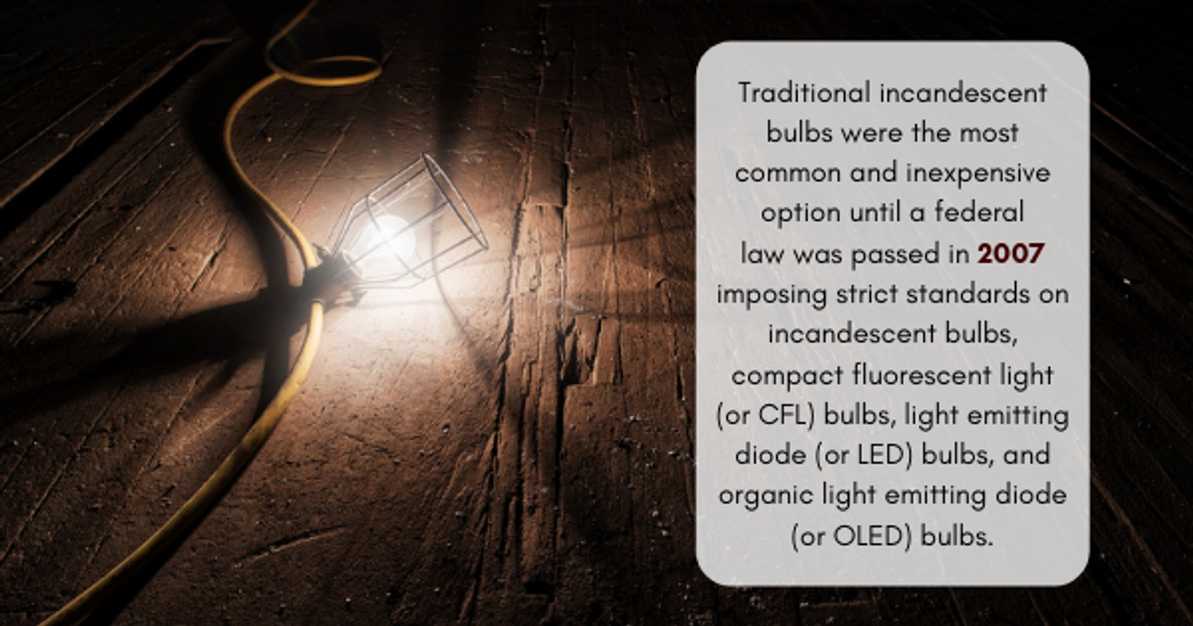Six Reasons to Make the Switch to Commercial LED Lighting for Your Business
There are many options when it comes to lighting your business. Traditional incandescent bulbs were the most common and inexpensive option until a federal law was passed in 2007 imposing strict standards on incandescent bulbs, compact fluorescent light (or CFL) bulbs, light emitting diode (or LED) bulbs, and organic light emitting diode (or OLED) bulbs. The efficiency standards imposed on incandescent bulbs were so strict that they were essentially phased out of use. This left CFL, LED, OLED, and halogen bulbs available in the U.S. Additionally, traditional fluorescent tubes and induction lights were not regulated under the 2007 law and remain available. In response, many businesses are transitioning to use alternative lighting. Here are six reasons businesses are transitioning to commercial LED lighting:
- LEDs are highly efficient. On average, LEDs use 75% less electricity and last 25 times longer than incandescent bulbs. Lighting accounts for over 10% of residential energy use and nearly 20% of commercial energy use. According to some estimates, each LED bulb saves approximately $160 over its lifetime compared to incandescent bulbs. For a business with 100 incandescent bulbs, making the switch to commercial LED lighting could mean a savings of $16,000 over the lifetime of the LED bulbs.
- LEDs are directional and have a long life span. This means that commercial LED lighting is better than CFL bulbs, incandescent bulbs, or halogen bulbs for such uses as work lights and security lights because the light from an LED bulb can be directed to a specific area and LED bulbs do not need to be changed as often as incandescent bulbs, CFL bulbs, or halogen bulbs.
- Unlike fluorescent tubes and CFL bulbs, LED bulbs require no time to warm up and do not contain toxic metals like mercury (which is used in fluorescent tubes and CFL bulbs). The mercury in fluorescent tubes and CFL bulbs means that fluorescent tubes and CFL bulbs must be taken to a hazardous waste recycler at the end of their life. Moreover, broken fluorescent tubes and CFL bulbs pose a risk of poisoning due to mercury vapor released into the air. Switching to commercial LED lighting reduces environmental and health risks compared to fluorescent tubes and CFL bulbs.
- Unlike halogen bulbs, CFL bulbs, and incandescent bulbs, LED bulbs give off very little heat. Incandescent bulbs and halogen bulbs waste about 90% of their energy as heat and CFL bulbs waste about 80% of their energy as heat. Halogen bulbs operate at a temperature that can cause burns if touched and create a fire hazard for nearby materials such as lampshades. Halogen bulbs give off so much infrared (or IR) and ultraviolet (or UV) light that they cause nearby fabrics to break down as if sun-damaged. Choosing commercial LED lighting over incandescent bulbs, halogen bulbs, or CFL bulbs will reduce waste heat escaping into the environment that may raise cooling costs, create fire hazards, and cause UV damage.
- Because of the heat emitted, halogen bulbs and incandescent bulbs are not suited for cold weather operation, which can cause them to burn out or burst. CFL bulbs are sensitive to cold temperatures, with different CFL bulbs designed to operate within different environmental temperature ranges. LED bulbs, by contrast, become more efficient at low temperatures because the heat sinks that cool the LED bulb's electronic components can dissipate heat more effectively as environmental temperatures drop.
- Fluorescent tubes emit more UV light than any other artificial light source. Studies have shown that exposure to the UV light emitted by cool, bright fluorescent light increases the risk of eye disease by 12%. Halogen bulbs also emit high levels of UV light. CFL bulbs give off less UV light than fluorescent tubes, but more than LED bulbs, which emit no ultraviolet light at all. Choosing commercial LED lighting can reduce the health risks caused by UV emitting lights.
Recent Posts
-
Spotlight - The IL-SPG54 Smart Solar Walkway Light: Where Performance Meets Simplicity
Introducing the IL-SPG54 Smart Solar Walkway Light: Where Performance Meets Simplicity When it comes …Jun 16th 2025 -
Corn Bulb Sale - While supplies last!
⚡ Limited Time Sale – BLE Series Corn Lamps Starting at $24.99! Stock up now while supplies la …Jun 11th 2025 -
Dark Sky Lighting in Breckenridge Colorado. Can I retain my existing fixture and still comply with the new Rules?
Breckenridge Colorado Dark Sky lighting has been a focus of ours for the last year. All resid …May 2nd 2025






